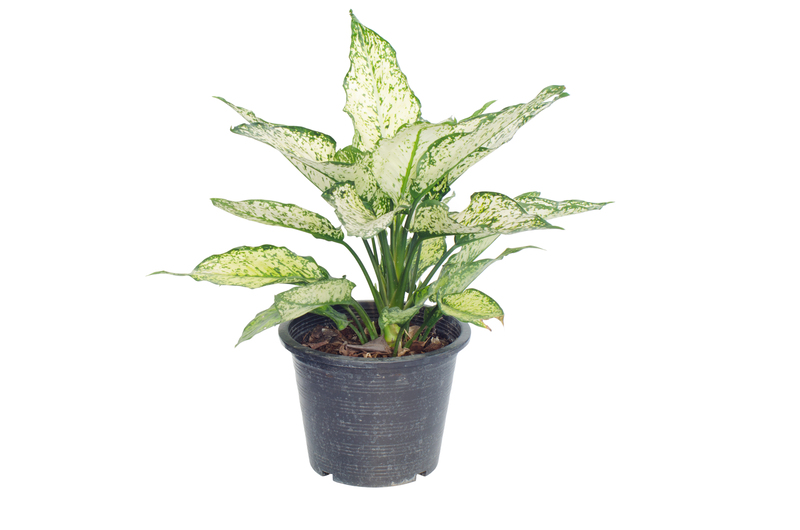Homeowner's Handy Guide to Tree Stump Clearance
Are you tired of that unsightly stump in your yard? Have you recently had a tree removed and are wondering what to do next? Tree stumps, while sometimes overlooked, can present safety hazards, attract pests, and hinder your landscaping goals. This Homeowner's Handy Guide to Tree Stump Clearance will walk you through everything you need to know about removing, disposing, and replacing tree stumps on your property.
Why Is Tree Stump Removal Important?
Many homeowners are tempted to leave old stumps in place. However, unaddressed tree stumps offer more problems than they solve. Below are some major reasons to prioritize tree stump removal:
- Pest Prevention: Decaying stumps attract termites, beetles, ants, and other unwanted pests.
- Safety: Tree stumps are trip hazards, especially for children and the elderly.
- Curb Appeal: Stumps make your landscape appear neglected.
- Space Reclamation: Removing stumps makes room for new landscaping, patios, or gardens.
- Disease Prevention: Old stumps can harbor tree diseases that might infect healthy plants.
Clearing a tree stump is an important step in reclaiming and beautifying your outdoor space. In this comprehensive guide, we'll explore the best methods for stump clearance for homeowners, provide safety tips, and answer common questions.

Assessing Your Stump Situation
Before diving into the removal process, it's important to consider a few factors:
- Stump Size: Smaller stumps are easier to remove than large, mature tree stumps.
- Wood Type: Hardwoods (like oak and maple) are more challenging to clear than softwoods (like pine).
- Location: Is the stump near underground utilities, buildings, or fences?
- Root Spread: Some trees have widespread roots that require extra effort to remove.
Assessing these factors will help you pick the most effective tree stump clearance technique for your yard.
Popular Methods for Tree Stump Removal
There is no one-size-fits-all answer for stump removal. Here are the most common techniques, each with its pros and cons:
1. Manual Stump Removal
Manual removal is best for small to medium-sized stumps or if you want to save money by doing it yourself. This labor-intensive method includes:
- Digging out the stump and roots with shovels, mattocks, and axes
- Cutting through major roots with a saw or axe
- Leveraging the stump out with a pry bar
Tips:
- Soak the ground around the stump for easier digging.
- Use a pruning saw or reciprocating saw for stubborn roots.
- Wear safety gloves, boots, and protective eyewear at all times.
2. Chemical Stump Removal
For larger stumps or minimal physical exertion, chemical removal breaks down the wood using specially formulated stump removers. Here's how it works:
- Drill several holes into the top and sides of the stump.
- Fill the holes with a chemical stump remover (often potassium nitrate).
- Allow the chemicals to accelerate the decaying process (4-6 weeks).
- Break apart and remove the softened stump.
Warnings: Always follow safety instructions for chemical use, and keep children and pets away from the area.
3. Stump Grinding
This is the most efficient method, especially for large and stubborn stumps. A stump grinder is a powerful machine with a rotating blade that chips away the stump to below ground level.
- Rent a stump grinder or hire a professional stump grinding service
- Clear the area around the stump and remove rocks/debris
- Operate the grinder to reduce the stump to wood chips
- Fill the hole with soil or mulch after grinding
Note: Because stump grinders can be dangerous, always read instructions carefully, and consider professional help for large stumps or if you lack experience with power tools.
4. Burning the Stump
Some homeowners opt to burn the stump. While effective, this method may be restricted by local fire ordinances.
- Drill holes into the stump and pour in kerosene or fuel oil (never gasoline)
- Light the stump (check local fire codes first)
- Monitor until the stump is reduced to ash
- Dispose of the remaining wood and ash safely
Warning: This method can be hazardous and is not allowed in many neighborhoods--check regulations before proceeding.
5. Natural Decomposition
If you're not in a rush, allow the stump to rot over time. Speed up natural decay by:
- Keeping the stump moist
- Drilling holes and packing them with nitrogen fertilizer
- Covering with a tarp to retain moisture and heat
This eco-friendly, hands-off method can take months or years for complete decomposition, depending on the tree species and local climate.
When Should You Hire a Professional for Stump Clearance?
Certain situations call for the expertise of certified arborists or tree removal companies:
- Large or Multiple Stumps: Professionals have the right equipment for quick, safe removal.
- Complex Roots: Trees with extensive root systems may require special techniques.
- Proximity to Utilities: Stumps close to pipes, cables, or structures should be cleared by experts to avoid costly damage.
- Time Constraints: Experts complete the job much faster, saving you effort and risk.
Before hiring:
- Check reviews and credentials of tree service companies
- Request a written estimate and timeline
- Confirm they carry liability insurance
What to Do with Leftover Wood Chips and Roots
After your tree stump removal project is complete, you'll likely be left with wood chips and debris. Put these leftovers to use by:
- Spreading wood chips as garden mulch
- Adding to your compost bin (if untreated)
- Using in pathways or beds for landscaping
- Contacting local compost facilities for large quantities
Stump Removal Safety Tips
- Tools and Machinery: Only use reliable, well-maintained equipment.
- Safety Gear: Always wear eye and ear protection, gloves, boots, and heavy-duty clothing.
- Don't remove stumps near power lines without professional help.
- Keep children and pets well away during work.
- Follow all product and machinery instructions meticulously.
Preventing Future Tree Stump Problems
Once you've completed your tree stump clearance, strive to avoid future growth or complications:
- Monitor the area for root suckers or regrowth, especially in species like poplar or willow.
- Fill in the hole properly and reseed with grass or desired plants.
- Consider planting trees farther from structures and utilities in the future.
Innovative Ideas for Tree Stumps
If total removal isn't your preference, repurpose your tree stump with creative landscaping:
- Transform it into a garden planter or fairy garden
- Use as a base for birdbaths or outdoor tables
- Create unique yard art or sculpture
Upcycling stumps can add charm and character to your landscape while saving removal costs.

Common Questions about Tree Stump Clearance
How much does professional tree stump removal cost?
Professional services usually charge $100-$400 per stump, depending on size, location, and complexity.
How long does it take to remove a tree stump?
Manual methods may take hours, while stump grinding can be completed in under an hour. Chemical decomposition methods require several weeks or months.
Can I plant a new tree in the same spot?
Planting in the exact same spot is often not recommended due to leftover roots and nutrient depletion. Clear the area thoroughly and consider planting nearby for best results.
Will the stump regrow?
Certain tree varieties, such as poplar or willow, can produce sprouting suckers from the residual root system. Monitor regularly and remove new growth promptly.
Conclusion: Reclaim Your Landscape with Effective Tree Stump Removal
With the right information, tools, and safety precautions, tree stump clearance for homeowners can be tackled confidently. Whether you choose manual labor, chemicals, grinding, or professional service, the investment pays off in safer, more attractive outdoor spaces. Say goodbye to tripping hazards and insect infestations, and hello to a renewed, beautiful yard!
Don't let an old stump stand in the way of your landscaping dreams--use this guide to take the next step towards a cleaner, greener property!